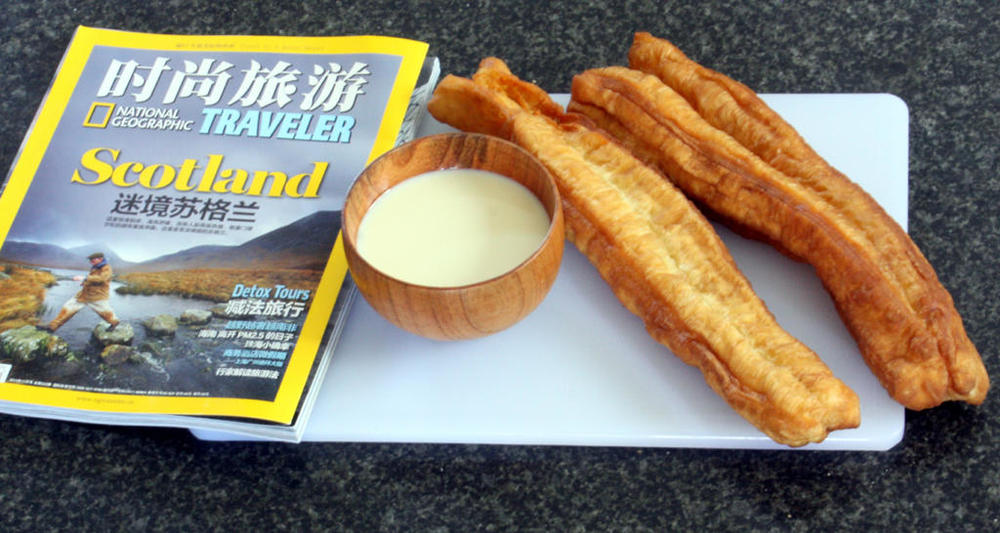Some solutions.
I have seen several suggestions on the internet on how do deal with the problems of getting vegetarian food in China (and the near impossibility of getting vegan food). As ever, I am highly sceptical that many of them work. One reason is linguistic; the other cultural.
The most common suggestion is to learn the phrase 我吃素 (wǒ chī sù) which is probably the simplest way to say "I am vegetarian". The problem with this suggestion is that you really have to get the pronunciation right and Chinese being a tonal language makes this difficult for speakers of non-tonal languages such as English. The second thing is that even if you get it spot on, there is no guarantee that the waitress won't say (in Chinese) "Oh I see. So you don't eat meat. I will bring you some very delicious chicken instead! And scatter some dried shrimp over your fried rice. It tastes much better that way," leaving you utterly bewildered by this barrage of incomprehensible and, to you, useless Chinese.
Many visitors have learned that people either just don't understand (or don't want to understand) visitors' Chinese, or they get the three words you have painfully learned, then assume you understand everything and lay into a full length lecture on the folly of your failure to be sensible and eat the bounty of the animal kingdom, nose to tail, while you sit there dying of malnutrition.
So, I'm trying here to avoid giving 'useful' phrases. As often as not they just confuse things further. (Even speaking the language or travelling with native speakers to guide and translate doesn't usually help. You still run into the refusal or inability to comprehend vegetarianism. Then there is the problem with the 10,000 dialects.) I recommend the pointing system.
Another tip I have heard, but never tried (I don't need to; I eat everything) is to not say what you don't want to eat; but to point out (perhaps literally) what you do want to eat.. It is not considered offensive in most small Chinese restaurants to wander into the kitchen, open fridges and cupboards etc and indicate what you want. Don't do this at peak hours, 12:00 to 13:00 where I am, but variable. Also, examining other diners' meals (more or less discretely) and pointing to them if they take your fancy often works.
Breakfast
This is probably the easiest to deal with. Hit the street early enough (many Chinese people get up early) and you will find little stalls everywhere selling all sorts of stuff. Perhaps the most popular breakfast here is dough sticks (cruller) served with soy milk .
You will see the foot long sticks everywhere, but when served they are usually cut (with scissors) into chopstick manageable pieces. I'm going to go out on a limb here and say they are probably fried in vegetable oil (it's cheaper) but it can't be guaranteed. The soy milk is, of course, vegan.
Other breakfast items include the many steamed buns. Some contain meat, sometimes signalled by the meat character (肉), but not always. Then there are the pancake type preparations. They are cooked in front of your eyes and you can see what they are putting in them. Usually egg, spring onions/scallions, coriander/cilantro etc. Again no guarantee what the cooking oil is, but probably vegetable.
Also, there are the noodle places. Many of these set the ingredients out in front of you and you point at what you want to be included. Problem here is they may well serve the noodles in a soup made from chicken stock.
Hotel Breakfasts
Many hotels (esp. tourist hotels) do buffet style breakfasts. These can be a good time to fill up for the day. You can see the food before you commit yourself. The amount of food I see people eat at these breakfasts is amazing. I'm sure they don't normally eat such a big breakfast at home.
Boiled eggs, fried noodles (fried in what?), buns, breads, cakes, rice porridge. I forget. It's been a while. Some even do cornflakes. Coffee will nearly always be instant, often pre-sugared and with whitener already added.
Lunch and dinner coming soon. I am getting hungry,so going for a break.





